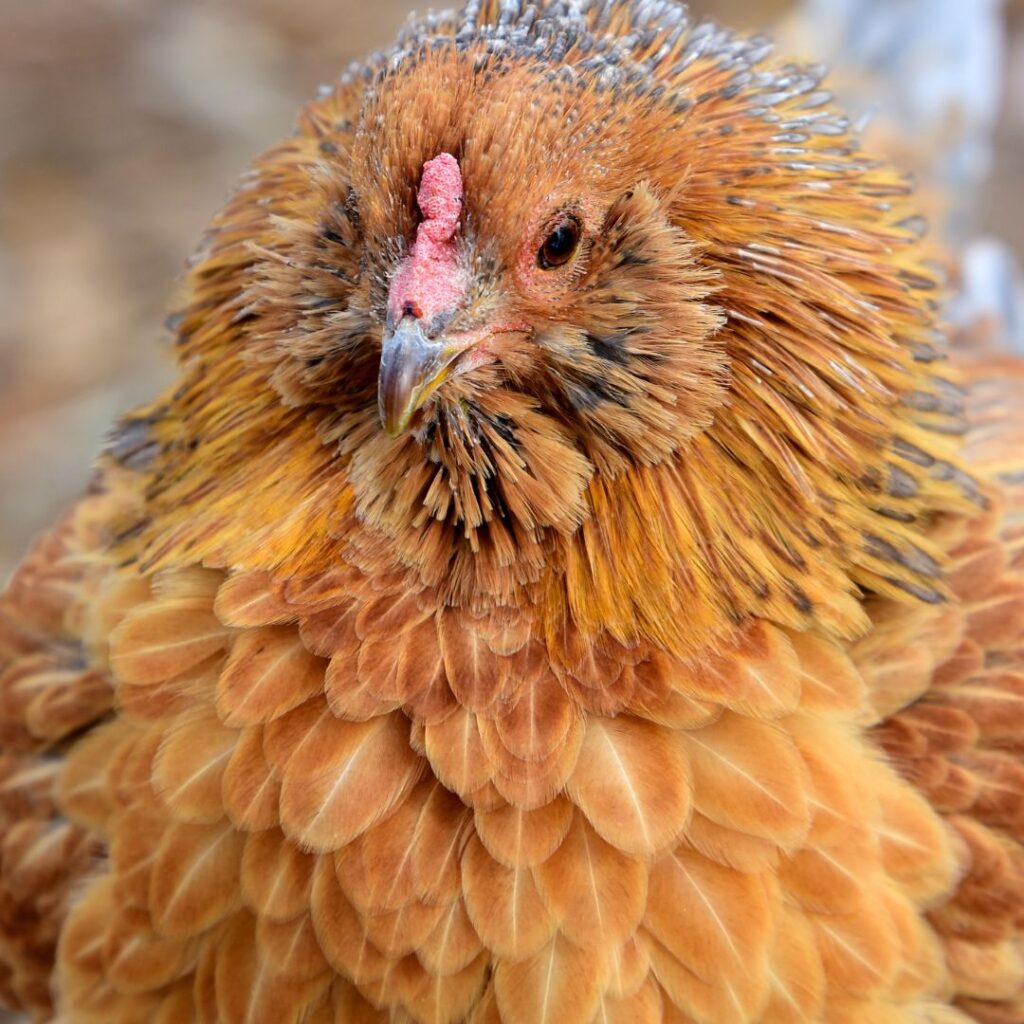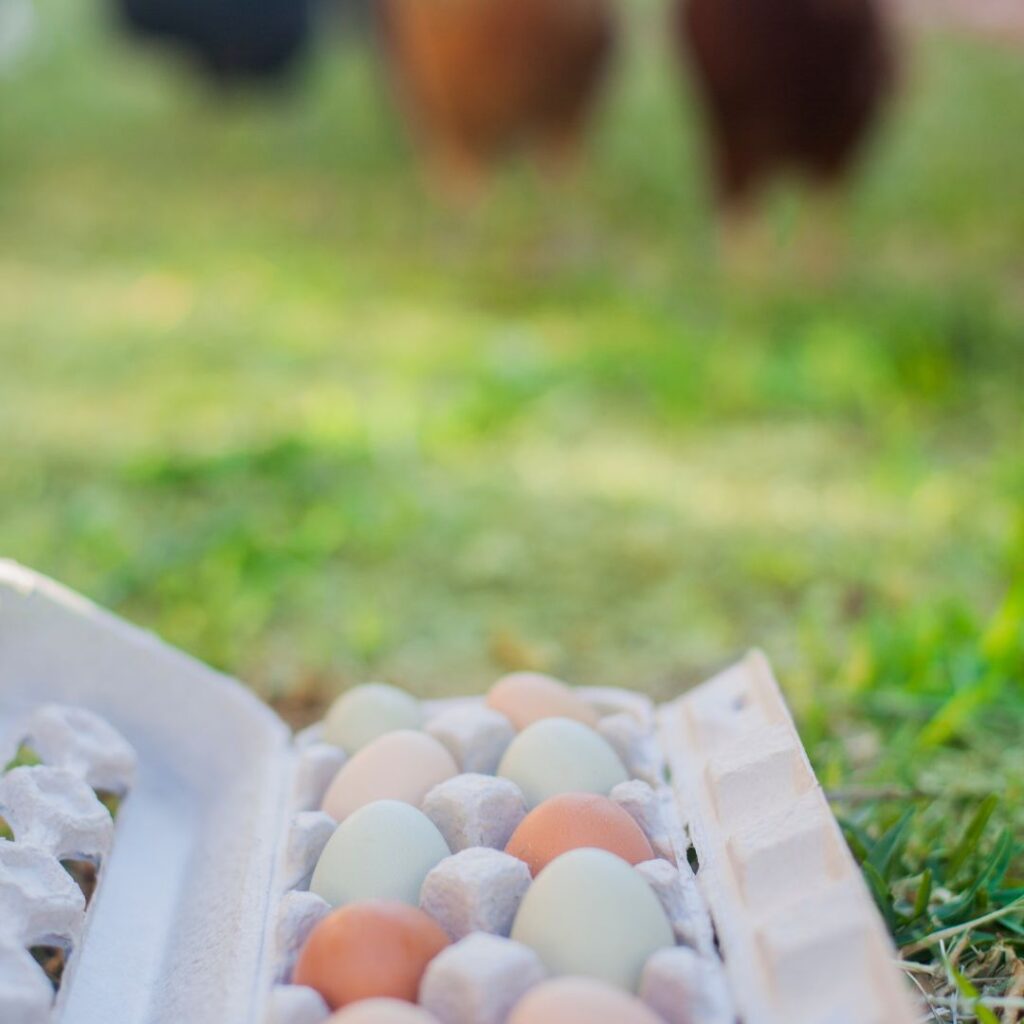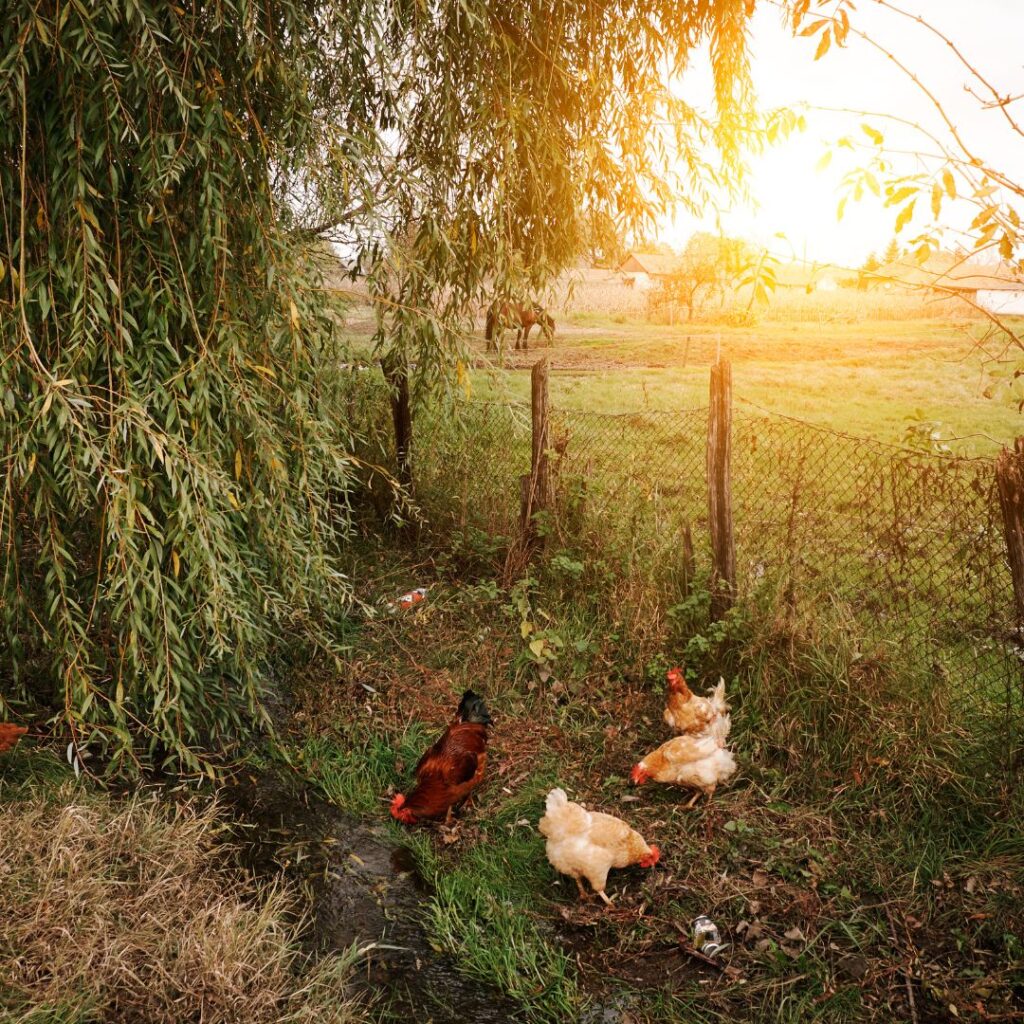Feather loss in chickens, or “chicken losing feathers,” is a common concern among backyard chicken keepers. Understanding the various causes of chickens losing feathers and implementing appropriate solutions can contribute to maintaining a healthy, happy flock.
Let’s explore why chickens lose feathers, from natural processes like molting and broodiness to external factors like parasites, diseases, and stress, and discuss the importance of proper nutrition and environmental enrichment.

Short Summary
- Molting is a natural process requiring increased protein intake to support new feather growth.
- Monitor flock behavior and maintain cleanliness to prevent parasites, diseases, bullying, and stress-induced feather loss in chickens.
- Provide balanced nutrition, dust baths, and engaging activities for healthy regrowth of feathers.
Natural Molting and Its Effects on Chickens

Molting is a natural process which chickens shed their old feathers and grow new ones, ensuring they maintain proper insulation and flight capabilities. This annual occurrence typically occurs during the autumnal season, when chickens must replace their worn-out plumage before the cold weather sets in.
Molting can be quite taxing for chickens, as it requires a significant amount of energy and resources to grow new feathers. To support this, chicken keepers should increase the protein intake of their flock during molting by providing a high-quality feed with a protein content of 20% or higher and high-protein snacks such as mealworms, cat food, or a small number of fish pellets.
Juvenile Molting
Juvenile molting occurs as young chicks transition from their downy feathers to adult feathers. This process typically takes place at around 7-12 weeks of age and can result in some missing feathers during this time. However, this temporary feather loss is a normal part of a chick’s development, preparing them for life’s challenges outside the brooder.
Young roosters acquire their distinctive combs and plumage during juvenile molting, making them easily distinguishable from their female flock mates. This is essential to their development, allowing them to establish their role within the flock and attract potential mates.
Adult Molting
Adult molting is a natural process that occurs once a year, in which chickens shed their old feathers and grow new ones to replace them. The process starts with the head and neck area and progresses to the body, wings, and tail feathers, although there is no specific order for molting. During this time, chickens may also experience a temporary decrease in egg production as the protein supply is diverted from yolk production to feather growth.
To facilitate chickens during molting and address chicken feather loss, it is recommended to increase their protein intake by providing them with a higher protein feed in addition to extra protein snacks. This will help ensure healthy feather regrowth and may even result in improved plumage, as new feathers are often stronger and more vibrant than the ones they replace.
It’s also essential to keep an eye on the flock during molting, as the emergence of new pin feathers can sometimes cause irritation and discomfort to the chickens. Providing a dust bath and ensuring the coop is clean and well-maintained can help alleviate some of this discomfort, allowing the chickens to focus on growing their new feathers and returning to their regular egg-laying schedule.
Broody Hens and Feather Loss
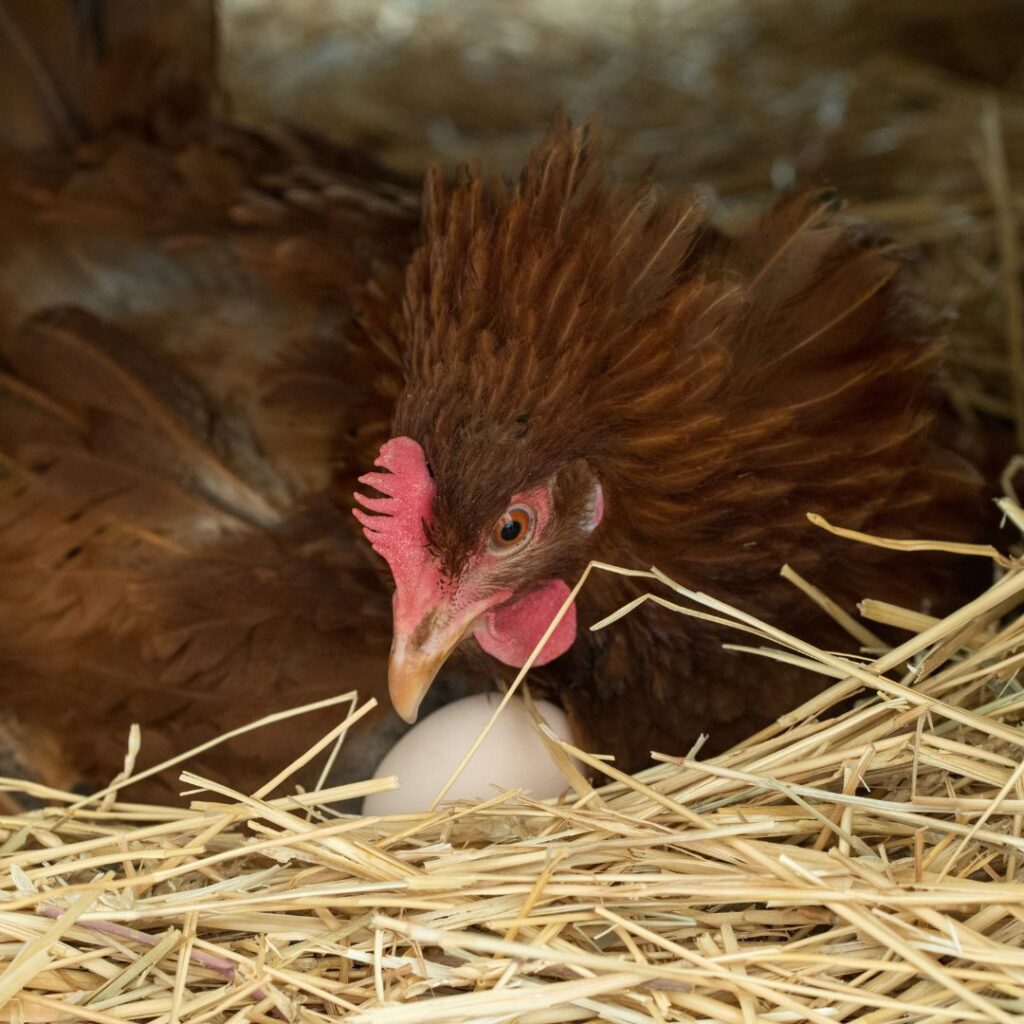
Broody hens have a strong instinct to incubate and hatch eggs, leading them to pluck their feathers to create a warm nest for their eggs. The loss of chest feathers in broody hens provides the ideal heat and moisture levels for incubating their eggs. Moreover, broody hens pluck feathers from their breast to line the nest with warm feathers for the baby chicks to rest on and to ensure that the incubating eggs are near their skin. When they stop laying eggs, they focus on the incubation process.
Generally, the plucked area on a broody hen will regrow feathers in due course, as many broodies go through a molt after raising their chicks. It is important to provide broody hens with ample access to food and water, as broodiness is a natural process that cannot be prevented, and it’s normal for chickens to lose some feathers during this time.
Pecking Order, Bullying, and Feather Loss
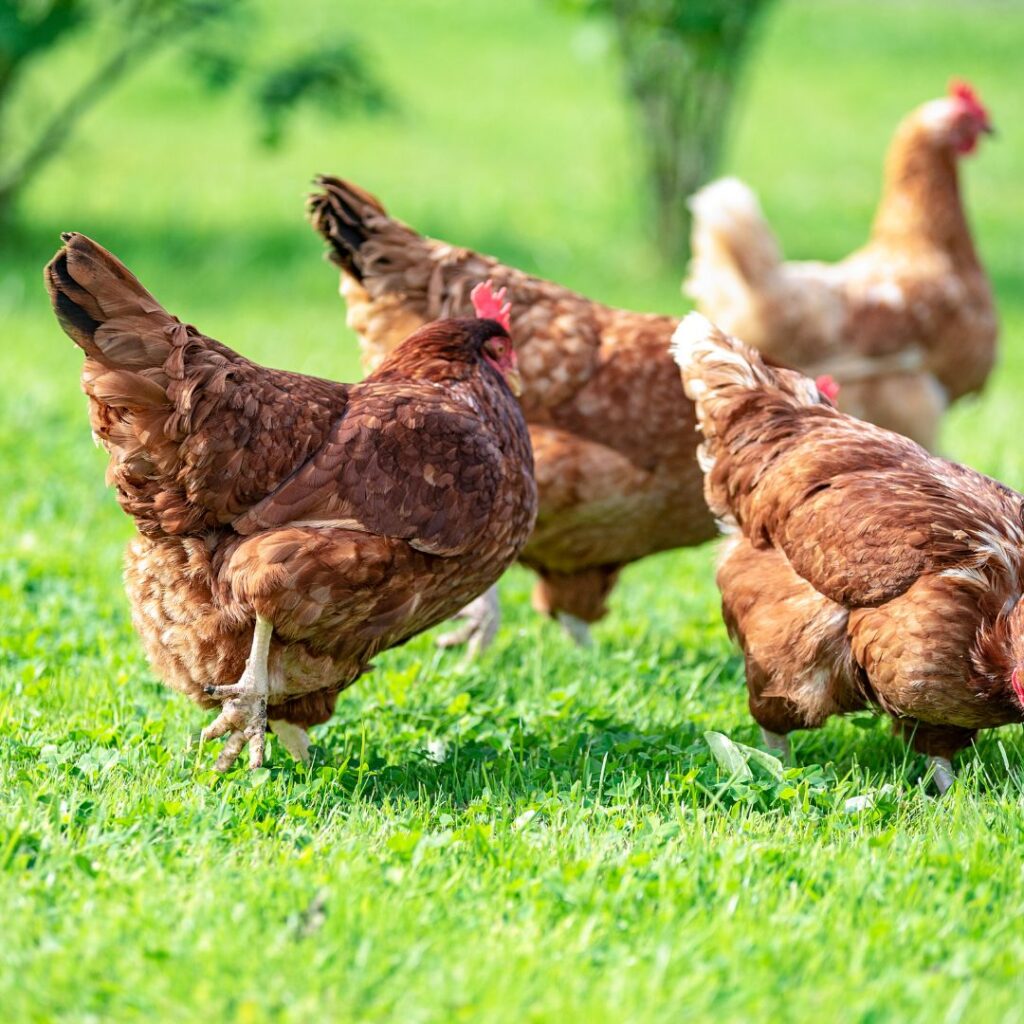
The pecking order is the hierarchy of status among chickens, wherein those at the top exercise control over the remainder of the flock. While establishing a pecking order is typical, it can sometimes become aggressive and lead to feather picking. Unchecked feather picking can progress to the point of cannibalism, which can have adverse effects on the flock.
Monitoring the flock and isolating aggressive birds is crucial to inhibit bullying among chickens and prevent them from losing feathers due to pecking and bullying. Overcrowding, boredom, inadequate nutrition, and guarding of feeders can all contribute to chicken feather loss, so addressing these issues can help maintain a peaceful and healthy flock. Read more on causes and how to prevent pecking problems.
Parasites, Diseases, and Feather Loss

Chickens may lose feathers due to external parasites, diseases, and infections. Addressing these issues is crucial for maintaining a healthy flock. One common reason chickens lose feathers is the presence of mites or lice. Signs that may point to these parasites in chickens include:
- Decreased activity
- Soiled vent feathers
- Pallid combs
- Changes in appetite
- Weight loss
- Diminished egg production
- Disheveled feathers
- Bald patches
- Feather-plucking
Illnesses such as fowl pox, cutaneous Marek’s, polyomavirus, malnutrition, and gangrenous dermatitis can also cause chicken feather loss. To prevent and address parasites, diseases, and feather loss, it is recommended to:
- Inspect for parasites regularly
- Initiate treatment promptly when infestations are detected
- Scatter poultry dust in the coop to treat mites
- Apply poultry dust directly onto chickens to treat lice
Additionally, maintaining a clean chicken coop, washing hands before handling chickens, and ensuring the flock has access to fresh water and proper nutrition can help prevent parasites and diseases from recurring, ultimately reducing the chances of feather loss due to these issues.
Rooster-Related Feather Loss
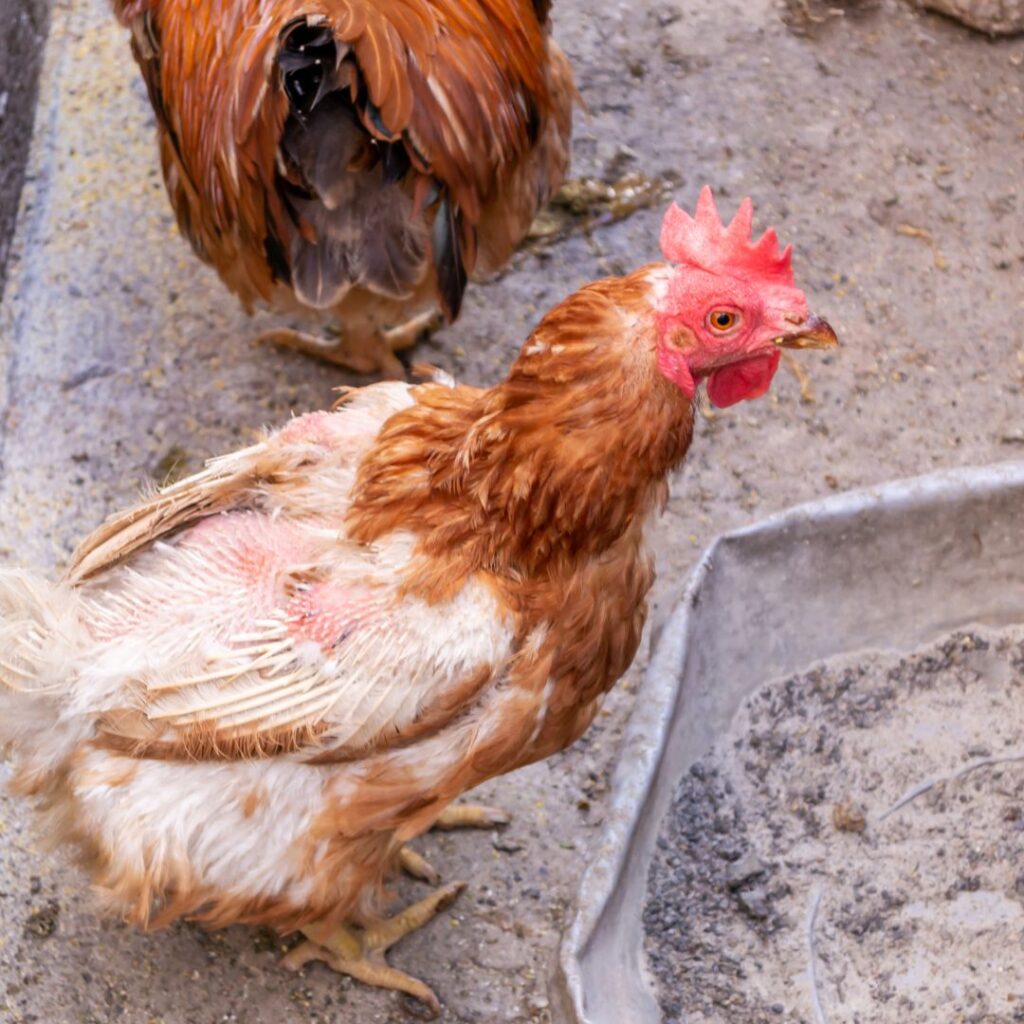
Roosters can cause feather loss in hens during mating, as they may extract chicken feathers from the hen’s neck and back while mounting them. Hen saddles can prevent chicken feather loss in hens due to mating with roosters, providing a protective barrier between the rooster’s nails and the hen’s feathers. Allowing the rooster to mate with multiple hens can also help evenly distribute the wear and tear on their feathers.
If hens sustain injuries during mating, separating them from the flock is important to allow them time to recuperate and regrow their feathers. This will help prevent further damage and ensure the health and well-being of the affected hens.
Stress-Induced Feather Loss
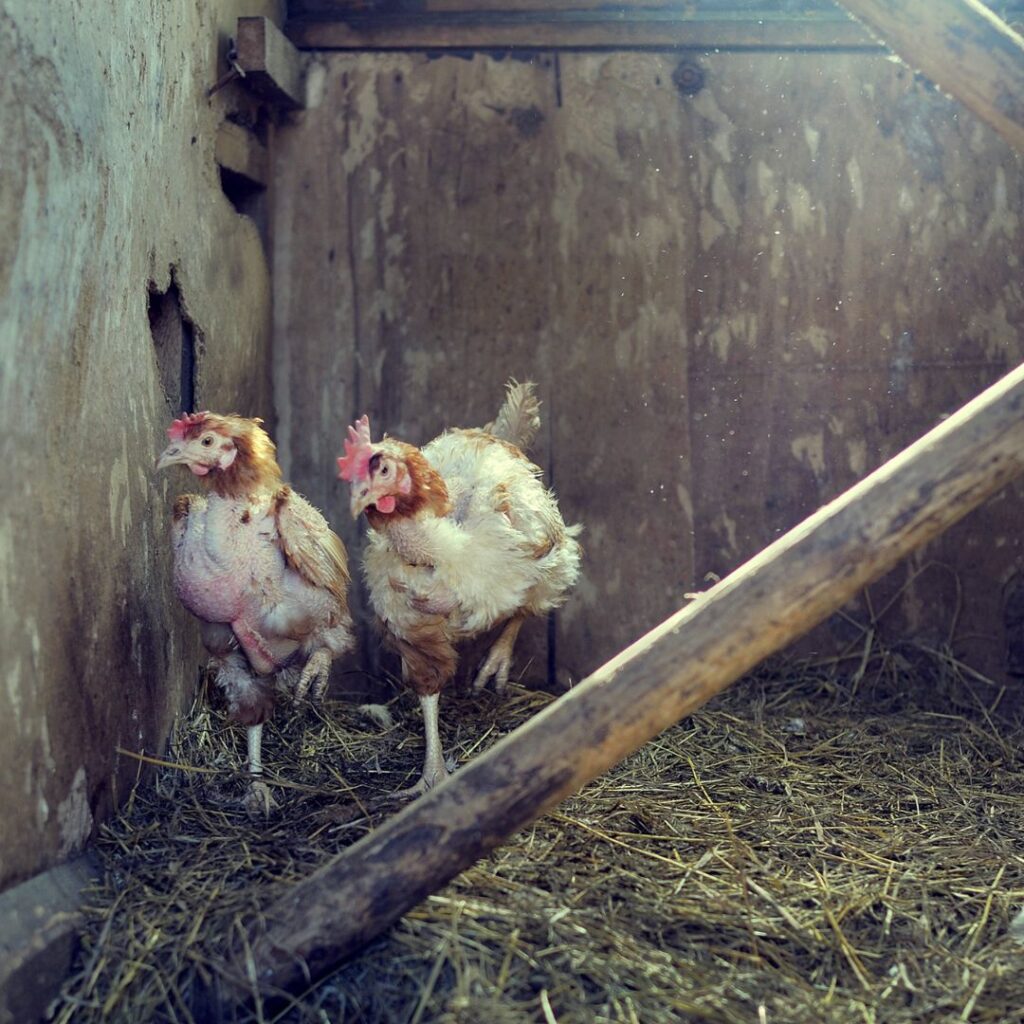
Stress can contribute to chickens losing feathers, so it’s important to identify and remove any stressors present in their environment. Feather loss due to stress may be attributed to predators or other factors that disrupt the flock’s routine, such as the introduction of new birds or relocation to a different coop.
To reduce the impact of stress on chickens losing feathers, it’s essential to:
- Mitigate the stressor
- Supply adequate nutrition and fresh water in a tranquil setting
- Ensure the flock has a safe and secure environment in which to live
- Provide enough space and engaging activities
These measures can help alleviate stress and promote a more harmonious flock.
Diet Changes and Feather Loss
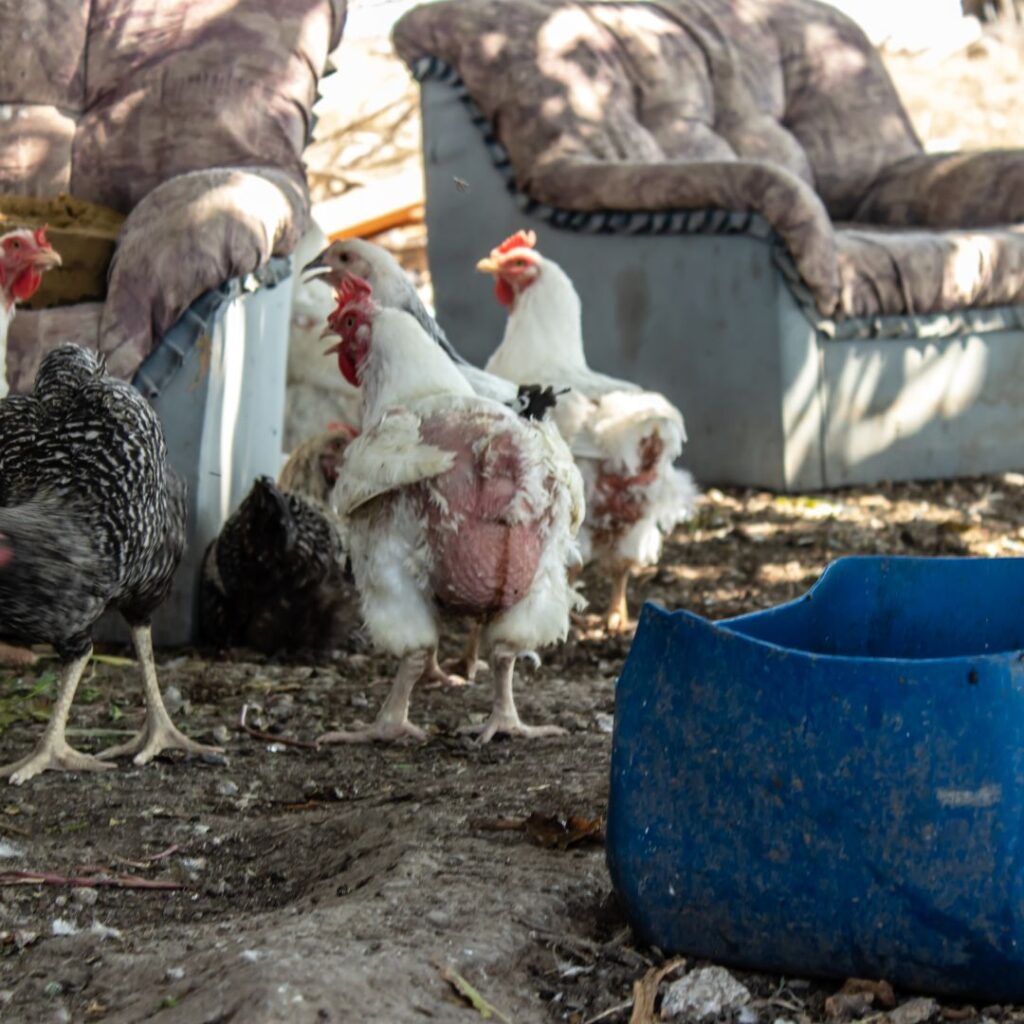
Sudden changes in diet can potentially induce a molt, which can lead to chickens losing feathers. This highlights the importance of a balanced, high-protein diet to maintain healthy plumage and overall well-being. Feather loss due to dietary issues may be attributed to inadequate levels of protein, phosphorus, and sodium in the diet or an absence of fresh greens, which can affect the health of chicken feathers.
To encourage healthy feather growth and prevent feather loss due to diet changes, it’s essential to provide a consistent, high-quality feed mix that meets the nutritional needs of the flock. Supplementing the diet with protein-rich snacks and fresh greens can also help support healthy feather growth and ensure the flock remains in optimal condition. (A-Z Comprehensive list of what chickens can eat)
Preening and Feather Loss
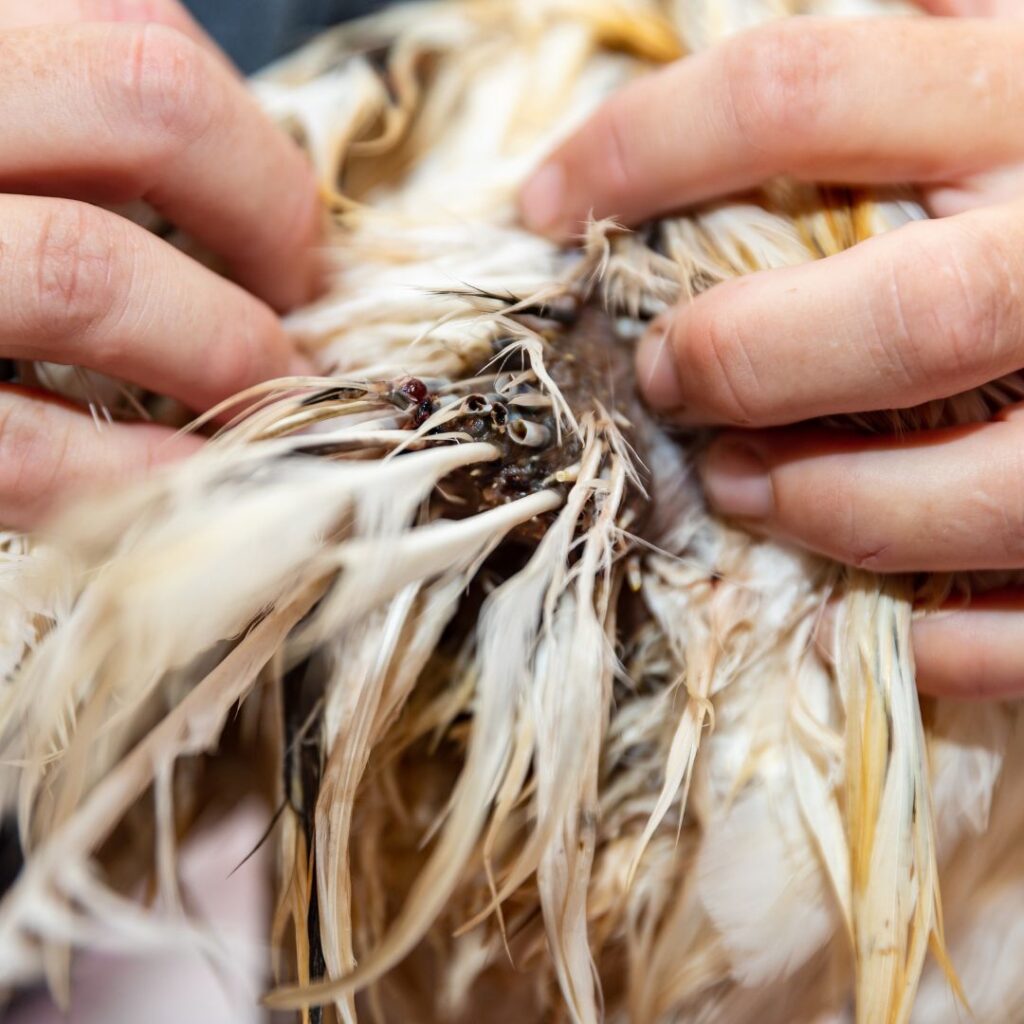
Preening is a natural behavior in which chickens use their beak to spread oil from their preen gland over their feathers, helping to maintain their plumage and keep it in good condition. While preening can result in minor feather loss as chickens remove broken or damaged feathers, it is generally not a cause for concern, as it is an essential part of their hygiene and self-maintenance routine.
Preening helps chickens stay healthy and comfortable, and it is an important part of the chicken diet.
Boredom and Its Impact on Feathers

Boredom can contribute to feather loss in chickens, as a lack of stimulation and engagement can lead to feather picking and other destructive behaviors. To alleviate boredom and promote a happier, healthier flock, it’s essential to provide the following:
- Ample space
- Perches for chickens to roost on
- Dust baths for chickens to clean themselves (dust baths)
- Foraging opportunities for chickens to search for food (free ranging)
By providing these engaging activities for your ten chickens, you can help prevent feather loss and ensure the well-being of your chickens.
Allowing backyard chickens to roam free range can also help ensure access to a diverse and stimulating environment, reducing the likelihood of boredom-induced feather loss.
Encouraging Healthy Feather Regrowth
Promoting healthy feather regrowth is crucial for maintaining a flock’s health and well-being. Ensuring proper nutrition is one of the most critical factors in supporting healthy feather growth, as chicken feathers are primarily composed of protein.
To promote healthy feather regrowth and support the overall health of the flock, consider the following:
- Supplying protein-rich snacks, such as mealworms or sunflower seeds, in a controlled manner
- Providing a balanced diet that includes high-quality protein sources
- Ensuring access to clean water at all times
- Managing stress levels in the flock, as stress can negatively impact feather growth
By implementing these strategies, you can help promote healthy feather regrowth and maintain the well-being of your flock.
Dust baths are another essential component of healthy feather regrowth, as they help to eliminate parasites and maintain the cleanliness of the chicken’s feathers. Providing a designated dust bath area in the coop or run will encourage chickens to partake in this vital hygiene activity, ultimately contributing to healthier, stronger feathers.
Finally, addressing any underlying issues causing feather loss, such as parasites, diseases, or stress, is essential for promoting healthy feather regrowth. By proactively identifying and resolving these issues, chicken keepers can help ensure their flock remains in optimal condition and experiences minimal feather loss.
Conclusion
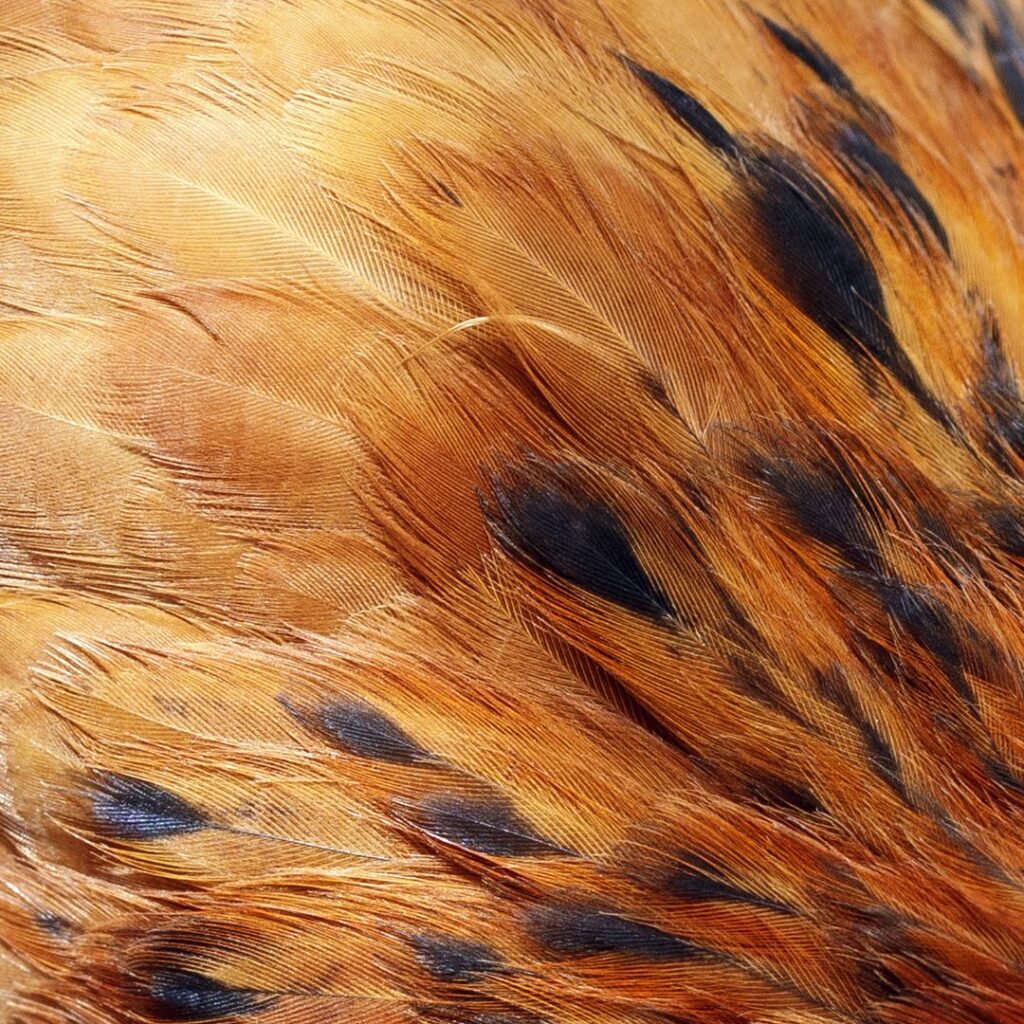
Understanding the various causes of feather loss in chickens and implementing appropriate solutions is vital for maintaining a healthy, happy flock. From natural processes like molting and broodiness to external factors such as parasites, diseases, and stress, being proactive and addressing these issues can make a significant impact in the overall well-being of your chickens.
By providing a nutritionally balanced diet, a clean environment, and engaging activities, you can ensure your chickens remain in optimal condition, with healthy plumage to match.
Frequently Asked Questions
How do you tell if a chicken is molting or has mites?
Check for signs of mites or lice, like decreased activity, dirty vent feathers, pale combs, appetite changes, weight loss, reduced egg production, ragged-looking feathers, bald spots, and feather-pulling to determine if a chicken is molting or has mites.
These signs can help you decide if your chicken is molting or has mites. If you suspect mites, you should take steps to treat the infestation. Treatment options include using mite-killing products, such as dusting powders, sprays, shampoos, and natural remedies like garlic and neem oil.
How do you treat feather loss in chickens?
To treat feather loss in chickens, provide them with higher protein feed and snacks, such as mealworms or cat food.
If they start molting late into the winter, consider using a coop heater.
Do chickens lose feathers when they have mites?
Mites and lice can cause chickens to lose feathers, and these parasites can be identified by looking for them and their eggs around the birds’ vents.
Treatment is then necessary in order to get rid of the mites.
What time of year do chickens molt?
Chickens typically molt in the fall when the hours of daylight decrease, as they need to regrow quality feathers to prepare for winter.
How can I support healthy feather regrowth in my chickens?
Creating a balanced, high-protein diet and clean living conditions for your chickens, as well as addressing any underlying health issues, will help promote healthy feather regrowth.
It looks like my baby chick losing feathers. Is that normal?
Most likely, your baby chick is just growing in its youth feathers and maturing in a healthy way. Look closely, you”ll see the pin feathers coming in.

